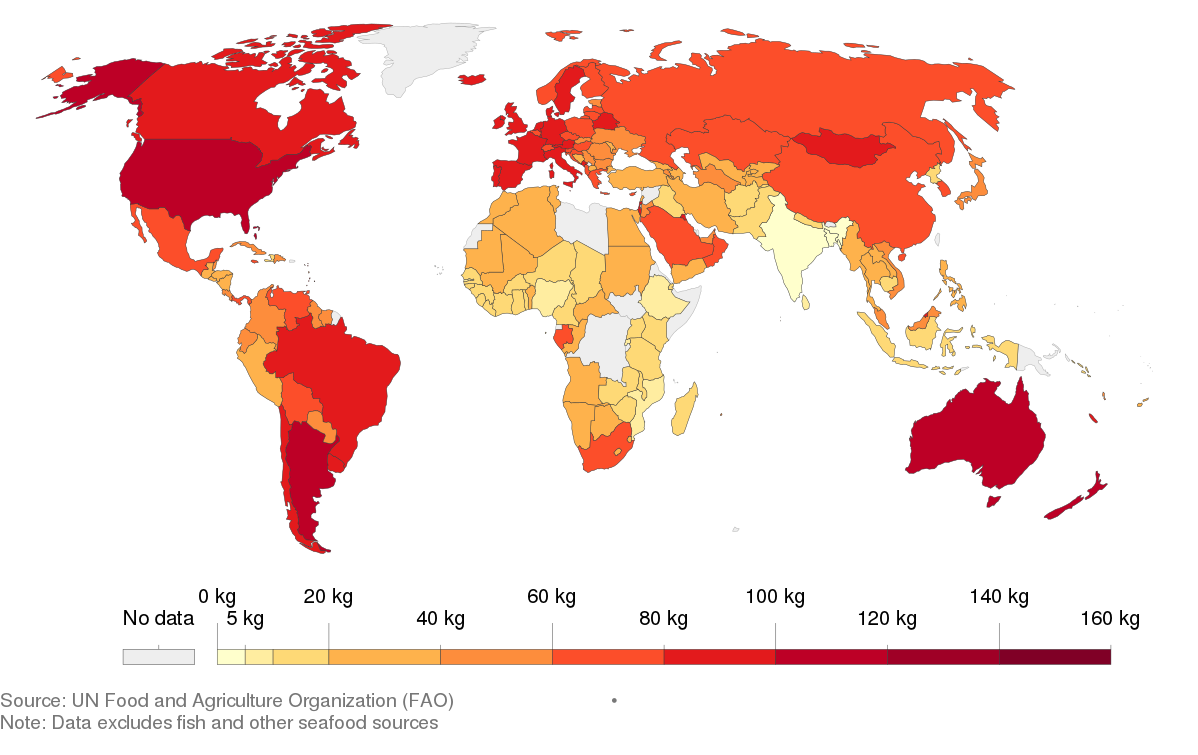Meat consumption has a huge impact on our planet’s ecosystem. People currently consume 350 million tons of meat a year. 30 years ago, people consumed only half the amount and in the 1960s even four times less than today. Due to the growing population, the prospects for the future are not favorable. By 2050, people are expected to consume 460-570 million tons of meat.
Why is increasing meat consumption a problem?
Meat production consumes 75 times more energy than corn. Meat is a very inefficient source of food because it requires a large amount of water, soil and energy to produce it. No other food source is as demanding as meat production. It is also a huge source of greenhouse gases. It takes an area of vegetation 7 times the size of the EU to produce food for the cattle and other livestock animals in Europe.
A report from the WWF finds that 60% of global biodiversity loss is caused by meat-based diets. It is essential that people limit their consumption of meat. In 2050, there will be over 10 billion people on Earth. If meat consumption does not decrease, it will be a global problem, there will be a shortage of food for so many people. There will also be a shortage of drinking water. Half of all water consumed in the US is used to grow grain for cattle feed.
Which countries consume the most meat?
Most meat is consumed in the United States. Every person here consumes an average of 124 kilograms of meat per year. In India, it is only 5 kilograms of meat per year. In the graphics below you can see which countries consume the most meat.
86% of people eat meat. Below you can see which types of meat are most popular in each country.

There is a need to take personal initiative and start replacing animal protein sources with plant ones.
Source & credit:
https://www.theworldcounts.com/challenges/consumption/foods-and-beverages/world-consumption-of-meat/story
en.wikipedia.org






